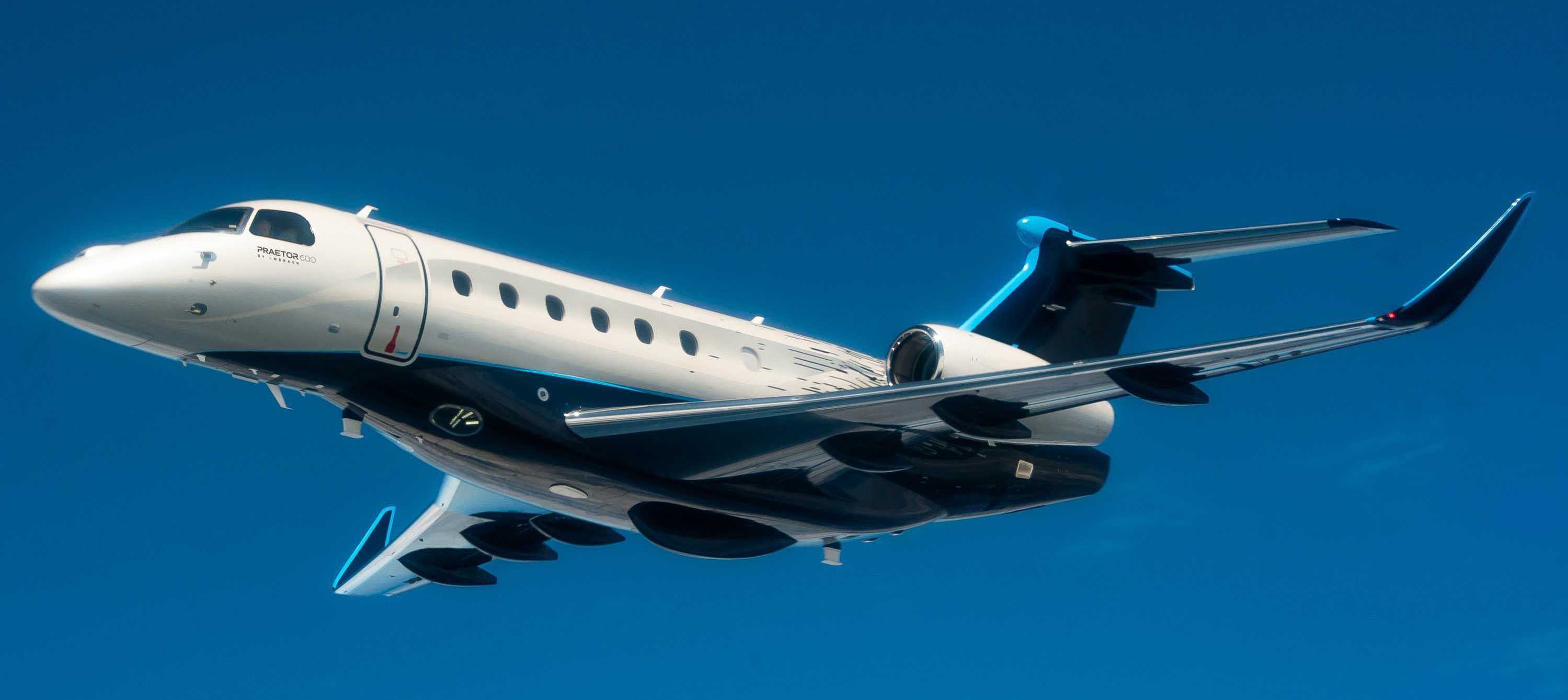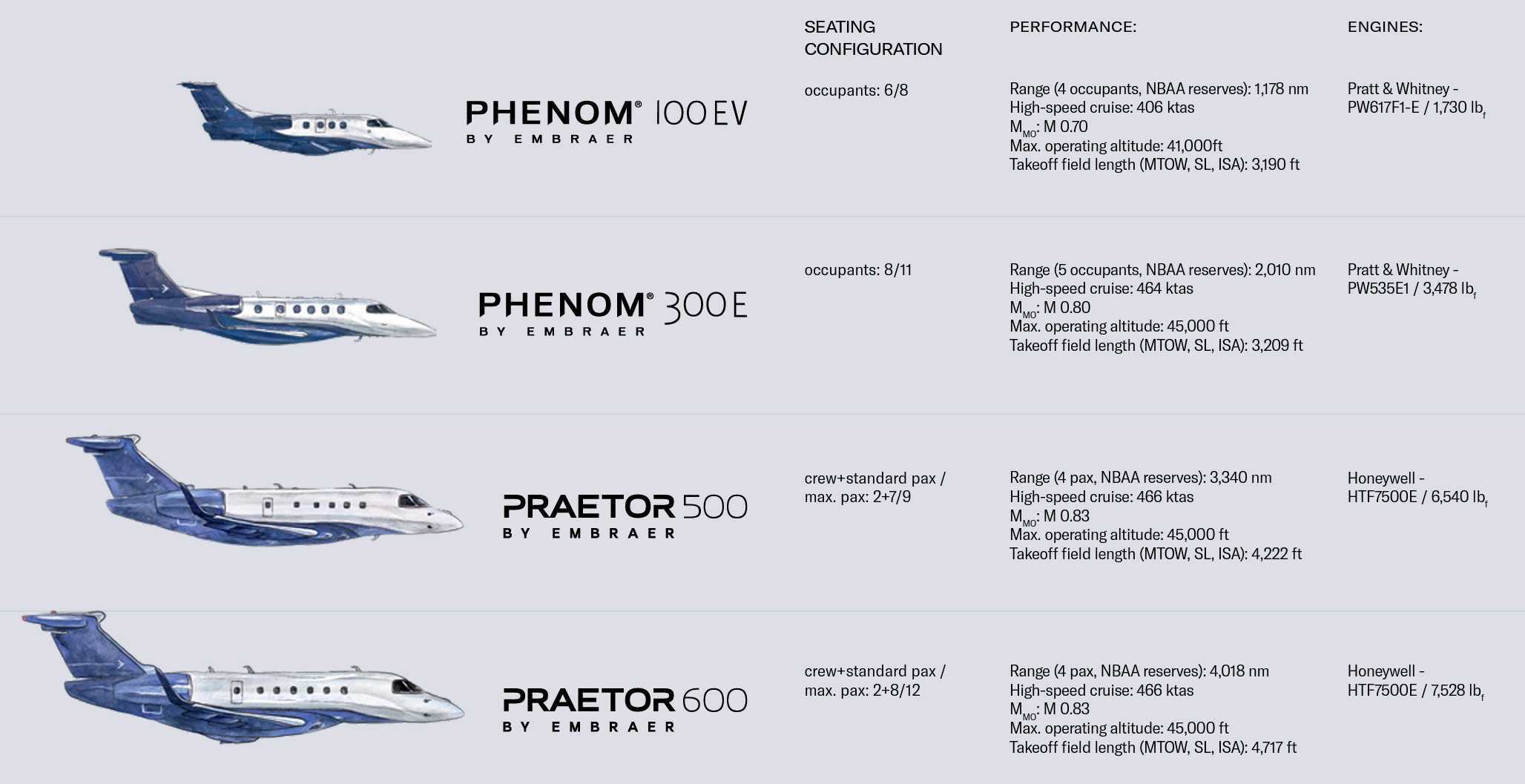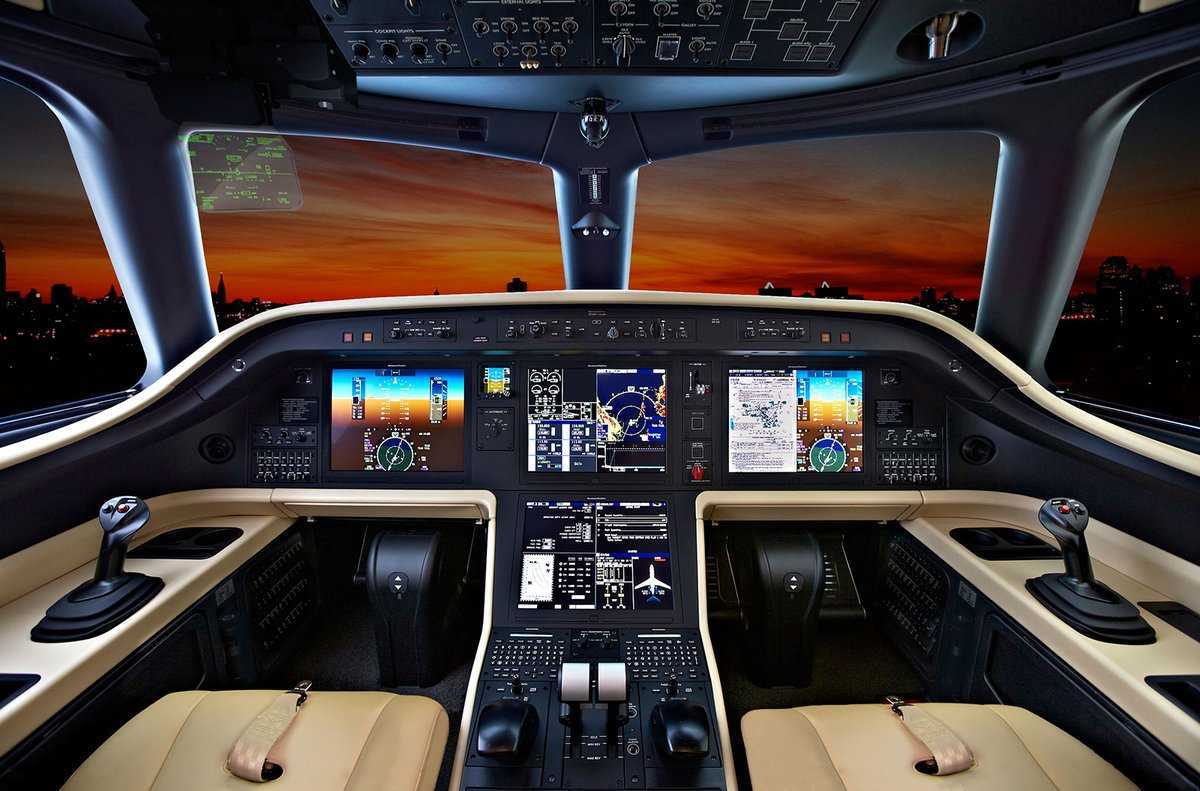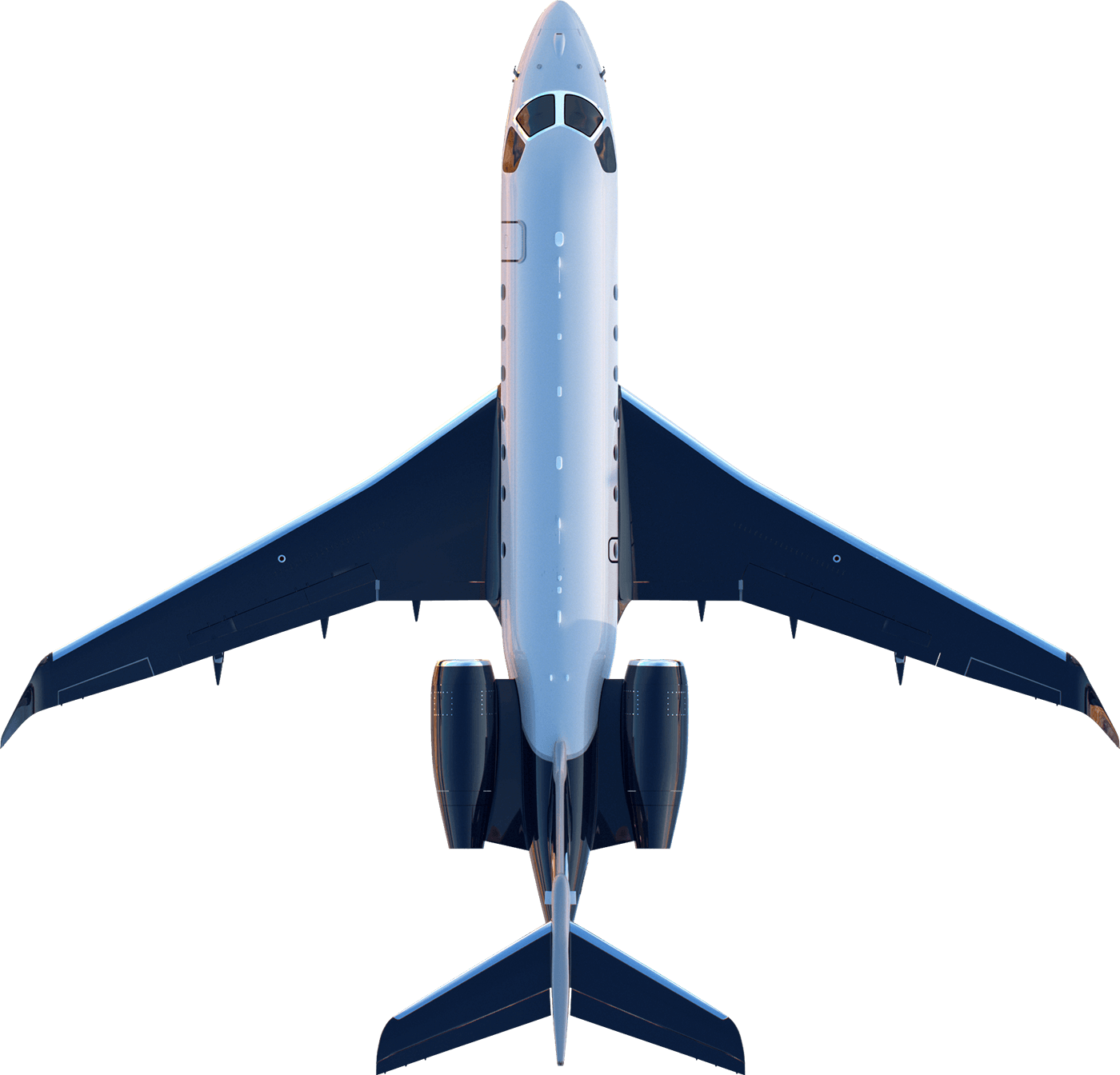Praetor 600 is a low wing, T-tail airplane with cabin pressurization, powered by two rear mounted turbofans. The landing gear is fully retractable and designed to be operated on paved runways only. The glass cockpit includes four multi-function displays. The operation is made through a flight management system with autopilot, autothrottle and closed-loop control and monitoring of flight controls Fly-By-Wire (FBW).
The aircraft are certified for Day, Night, VFR and IFR flights, and are approved for reduced vertical separation minima (RVSM) airspace and flight into known icing conditions, extended flight over water, Category II ILS, operations at high altitude airports up to 13800 ft and steep approach operations.

Praetor 600 delivers a nonstop range of 4,018 nm (7,441 km) at long-range cruise speed. This jet will take passengers from London to New York and back again. Fly from London to New York, São Paulo to Miami, or Dubai to London. This aircraft can fly its maximum range from a 4,436-foot runway and can operate from a runway as short as 3,000 feet.

Embraer’s FBW designs are of the flight path-stable variety, a trait they share with Falcon and Airbus jets. Compared with pitch- or trim-stable FBW designs (Boeing and Gulfstream), Embraer’s path-stable FBW allows the pilot to use the sidestick to select a flight path. The trim-stable FBW replicates traditional flight controls, and pilots fly the airplane exactly as they would with mechanical or hydraulic controls, continually manipulating the yoke or stick to achieve the desired performance, using trim to hold a particular attitude. In the Legacy FBW models, once the pilot sets the desired flight path, whether in pitch or bank (within certain limits), the pilot can release the sidestick and the FBW maintains that flight path with no further manipulation of the controls. There is no need for the pilot to trim.
The Embraer FBW has two flight envelopes, normal and limit. In the normal mode, the stick moves relatively easily (although it is spring-loaded to add some feel) until the limits are reached (33 degrees bank, plus 30 and minus 15 degrees pitch), Vmo, and 1.13 Vs (stall speed). The pilot can steer outside the normal envelope into the limit envelope, but doing so requires some pressure on the sidestick. The FBW system also automatically trims and compensates for pitch and yaw during turns and for roll during sideslips.
There is a lot more to the FBW system to help make flying easier for pilots. For example, at 65 knots on takeoff, the FBW switches to takeoff law. This gives pilots pitch-rate control with pitch damping, which helps them stop at the desired pitch attitude after rotation. About three to five seconds after takeoff, the FBW switches to the normal flight mode (Nz control law) and remains that way until configured for landing.
Avionics

The Praetors come with a new software load for the Rockwell Collins Pro Line Fusion avionics. A new RTA-4218 MultiScan radar adds vertical weather, predictive windshear, and ground-clutter suppression. Future capabilities are enabled by the new cockpit display of traffic information (CDTI), which displays TCAS and ADS-B In traffic. Eventually this will allow for reduced separation in busy traffic areas. The most significant avionics addition is the synthetic vision guidance system (SVGS), which will be approved for a 50-foot reduction in Cat I ILS minimums to 150 feet and lower visibility minimums without requiring a head-up display or special training. Embraer’s Rockwell Collins-based E2VS enhanced vision system and HGS-3500 head-up display, which can display both EVS and synthetic vision system imagery.
- A fully loaded package for operation in global modernized airspace: SBAS-capable GNSS, localizer performance with vertical guidance (LPV) approaches, radius-to-fix (RF) legs and more
- Widescreen displays with advanced graphics, configurable windows and touchscreen or point-and-click navigation, including Collins’ high-res synthetic vision with airport dome and extended runway centerlines that utilize mile markers on final approach
- Create or edit flight plan with touch-interactive maps, charts, high-res topography, real-time weather overlays, obstacle information and more
Cabin
The cabin can seat up to 12 passengers on board. It has a length of 8.2 meters, width of 2.08 meters and height of 1.83 meters. Both sides of the cabin are designed with seven windows for natural lighting into the interiors.
The cabin-management system in the Praetors is Honeywell’s Ovation select. Gogo Vision will be an option when the Gogo Avance L5 air-to-ground connectivity system is installed. All of the models offer a new global airborne connectivity option with the Viasat Ka-band satcom and IPTV.

Performance
The cabin measures 27.6 feet long by 6.1 feet wide by 6 feet tall giving it a total cabin volume of 1100 cubic feet. The dimensions make it comfortable for 8 passengers, with the maximum configuration seating 12. The baggage compartment can hold up to 22 bags, assuming your average piece of luggage is less than 5 cubic feet. The Praetor 600 has a maximum range (subject to headwinds, high altitude, hot temperatures, or higher capacity) of 4100 miles and a maximum speed of 624 mph.